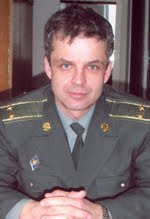Führerhauptquartier Werwolf was the codename
used for one of Adolf Hitler's World War II Eastern Front military headquarters
located in a pine forest about 12 kilometres (7.5 mi) north of Vinnitsa in the central Ukraine that was used between 1942
and 1943. It was one of a number of Führer Headquarters throughout Europe, and the most easterly ever used by Hitler in
person. The name is derived from Werwolf, which is German for werewolf. The
naming scheme is in accord with other code-names given to Führerhauptquartiere
during the Second World War, such as Wolfsschanze. Several were named for
Hitler himself, whose nickname was Wolf, an old German form of Adolf.
The complex was located in a pine forest between
the villages of Stryzhavka and Kolo-Mikhailovka on the Kiev highway. It was built between December
1941 and June 1942 under top secret conditions. The Wehrmacht had its regional
headquarters in Vinnytsia, and the Luftwaffe had a strong presence at their
airbase in Kalinovka, about 20
km away. Hitler's accommodation at Werwolf consisted of
a modest log cabin built around a private courtyard with its own concrete
bunker. The rest of the complex consisted of about 20 wooden cottages and
barracks and up to three "B" class bunkers, surrounded by ring of
barbed wire and ground defensive positions connected by underground tunnels. A
couple of observation points were set up on platforms in the oak trees
surrounding the pine forest. The area was surrounded by a defensive strip of
bunkers, anti-aircraft guns and tanks, as well as anti-tank ditches and
minefields. There was a tea house, a barber shop, a bathhouse, a sauna, a
cinema and even an open swimming pool for the inhabitants' use. Although this
pool was primarily intended for Hitler, he never once swam in it. The facility
also contained a large vegetable garden organised by the German horticultural
company Zeidenspiner to provide Hitler with a secure supply of food. Two
artesian wells supplied the site with water, and the site had its own power
generation facilities. The bunkers were constructed by Organisation Todt using
local Ukrainian workers, forced labour but mainly Russian prisoners of war.
Many of the workers were subsequently murdered to maintain secrecy of the site.
During his Eastern campaign, Adolf Hitler lived mainly at FHQ Wolfsschanze
(near Rastenburg, Poland). He stayed at FHQ Werwolf
only three times:
- 16 July to 30 October 1942.
- 19 February to 13 March 1943.
- 27 August to 15 September 1943.
Plans in Ukraine to open a museum at the
ruins of a bunker used by Hitler during World War II have provoked concerns it
could become a shrine for neo-Nazis. The decision by local authorities in the centrally
located city of Vinnitsa to turn the site of the
Wehrwolf bunker into a tourist attraction has caused so much controversy that
President of Ukraine Viktor Yanukovych requested on a recent visit to Vinnitsa that the matter
be settled in a local referendum. Originally, the museum had been due to open
in May 2012 to coincide with the commemoration of victory over the Nazis. But
communist and socialist party activists opposed the idea, arguing that the
creation of such a museum would be tantamount to spreading Nazi propaganda.





